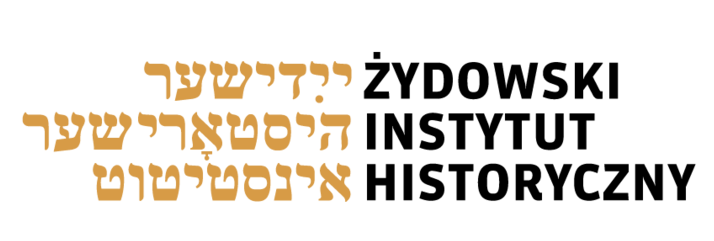 ROCZNICA URODZIN HENRYKI ŁAZOWERTÓWNY
ROCZNICA URODZIN HENRYKI ŁAZOWERTÓWNY
Anna Majchrowska
Henryka Łazowertówna urodziła się 19 czerwca 1909 r. w Warszawie. Podczas II wojny światowej należała do grupy Oneg Szabat. Pisała przede wszystkim o uchodźcach, wyłuskując ze statystki samopomocowych raportów losy poszczególnych żydowskich rodzin i ukazując ich walkę o przetrwanie w getcie.
 Henryka Łazowertówna
Henryka Łazowertówna
Była pisarką, poetką i tłumaczką, studiowała filologię polską i romańską na Uniwersytecie Warszawskim i w Grenoble we Francji. Wydała przed wojną dwa bardzo dobrze przyjęte tomiki wierszy: Zamknięty pokój i Imiona świata, a w 1938 r. opowiadanie Wrogowie. Od 1935 r. należała do warszawskiego oddziału Związku Zawodowego Literatów Polskich.
Przed 1939 r. mieszkała z matką przy ul. Siennej w Warszawie, po utworzeniu getta znalazło się na terenie tzw. małego getta.
Po wybuchu wojny Łazowertówna zaangażowała się w pracę społeczną, m.in. w działalność organizacji charytatywnej CENTOS, która opiekowała się bezdomnymi i osieroconymi dziećmi. Emanuel Ringelblum, który zaproponował jej przygotowywanie materiałów propagandowych w Żydowskiej Samopomocy Społecznej, pisał: jej materiały propagandowe, plakaty, odezwy, listy itp. cechowała serdeczność, lekkość i prostota stylu. Oddziaływały swoją prostotą i szczerością. [Emanuel Ringelblum, Kronika getta warszawskiego]
Ringelblum wciągnął też Łazowertównę do prac Archiwum. Pisała przede wszystkim o uchodźcach, wyłuskując ze statystki samopomocowych raportów losy poszczególnych żydowskich rodzin i ukazując ich walkę o przetrwanie w getcie. Jest m.in. autorką relacji „Dziewięć miesięcy na Pawiaku” spisanej w 1941 r.
 Henryka Łazowertówna, “Dziewięć miesięcy na Pawiaku”, pierwsza strona
Henryka Łazowertówna, “Dziewięć miesięcy na Pawiaku”, pierwsza strona
W konkursie rozpisanym przez Oneg Szabat wśród wąskiego kręgu przyjaciół i współpracowników, jej monografia o losie rodzinie z Bydgoszczy po przesiedleniu do Warszawy zdobyła jedną z pierwszych nagród. [Emanuel Ringelblum, Kronika getta warszawskiego]
Piosenkę z tekstem najbardziej znanego wiersza Łazowertówny, Mały szmugler w gettowych restauracjach i teatrach wykonywała słynna pieśniarka Diana Blumenfeld.
Przez mury, przez dziury, przez warty
Przez druty, przez gruzy, przez płot
Zgłodniały, zuchwały, uparty
Przemykam, przebiegam jak kot.
W południe, po nocy, o świcie
W zawieje, szarugę i skwar
Po stokroć narażam swe życie
Nadstawiam dziecinny swój kark.
Łazowertównie nie udało się schronić po „stronie aryjskiej”. Jak pisał Emanuel Ringelblum, Łazowertówna chorowała na płuca, lecz bez większej gotówki, bez jakichś dziesięciu tysięcy złotych, nie było co marzyć o stronie aryjskiej. Łazowertówna miała wielu przyjaciół Polaków (…), mimo to nie znalazł się nikt, kto by ją uratował. W czasie pierwszej akcji likwidacyjnej zginęła w Treblince razem ze swą matką. (…) Na Umschlagplatzu starano się uchronić ją przed pójściem do wagonu, ale nie chciano czy nie potrafiono zwolnić jej matki. Henryka Łazowertówna dobrze wiedziała, iż wysiedlenie oznacza śmierć, mimo to poszła za matką.
 Wiersz „Mały Szmugler” na pomniku Pamięci Dzieci — Ofiar Holokaustu na cmentarzu żydowskim w Warszawie
Wiersz „Mały Szmugler” na pomniku Pamięci Dzieci — Ofiar Holokaustu na cmentarzu żydowskim w Warszawie
Źródło: Wikipedia




